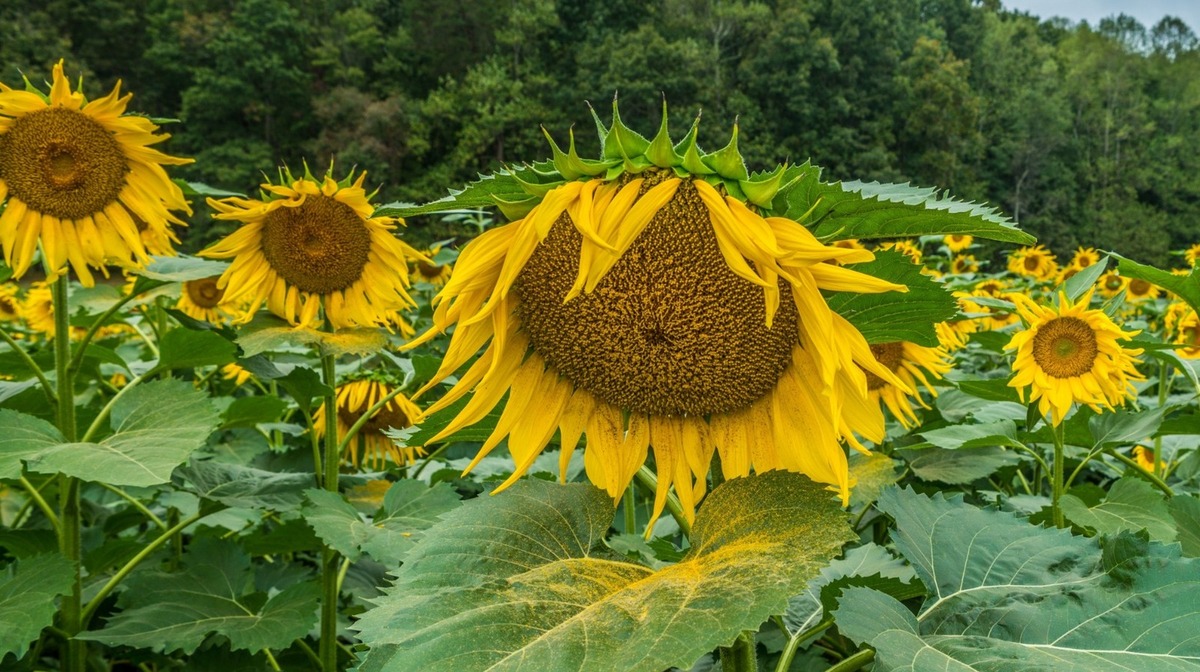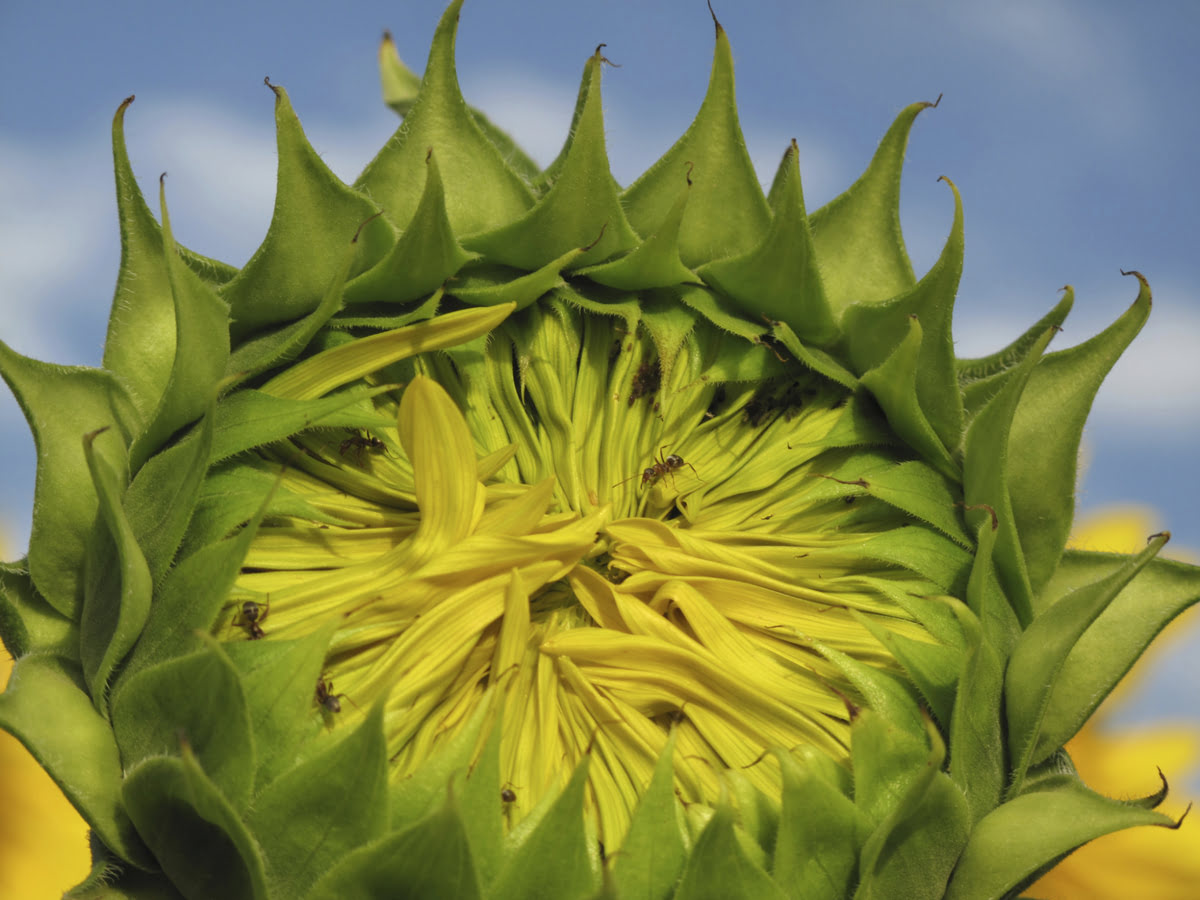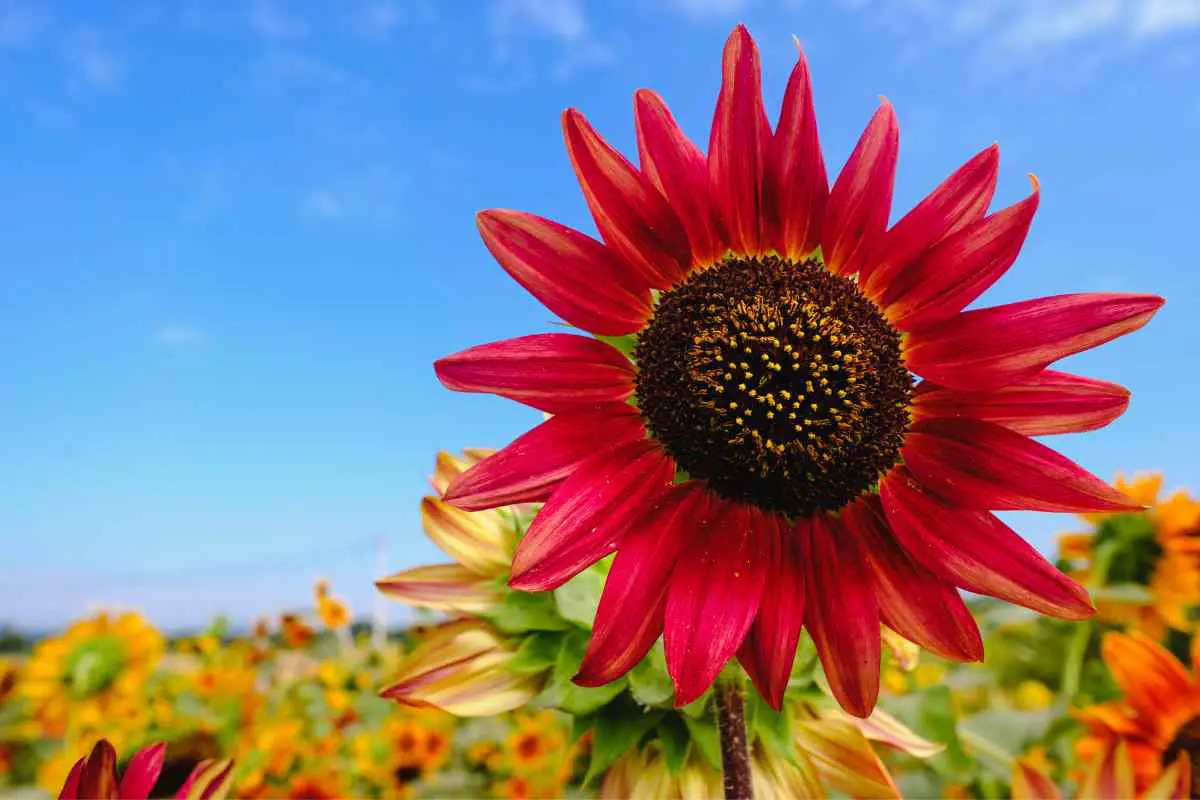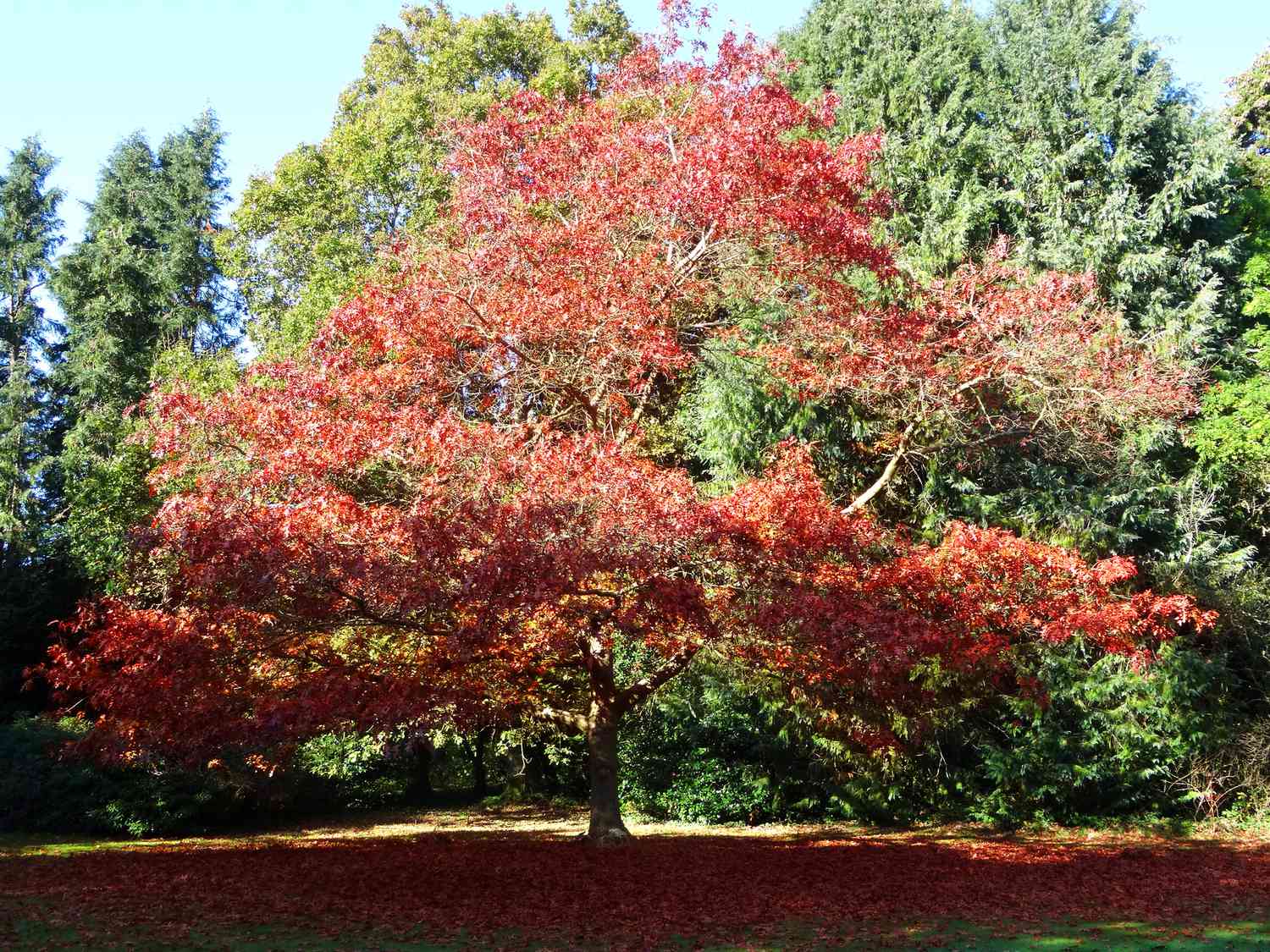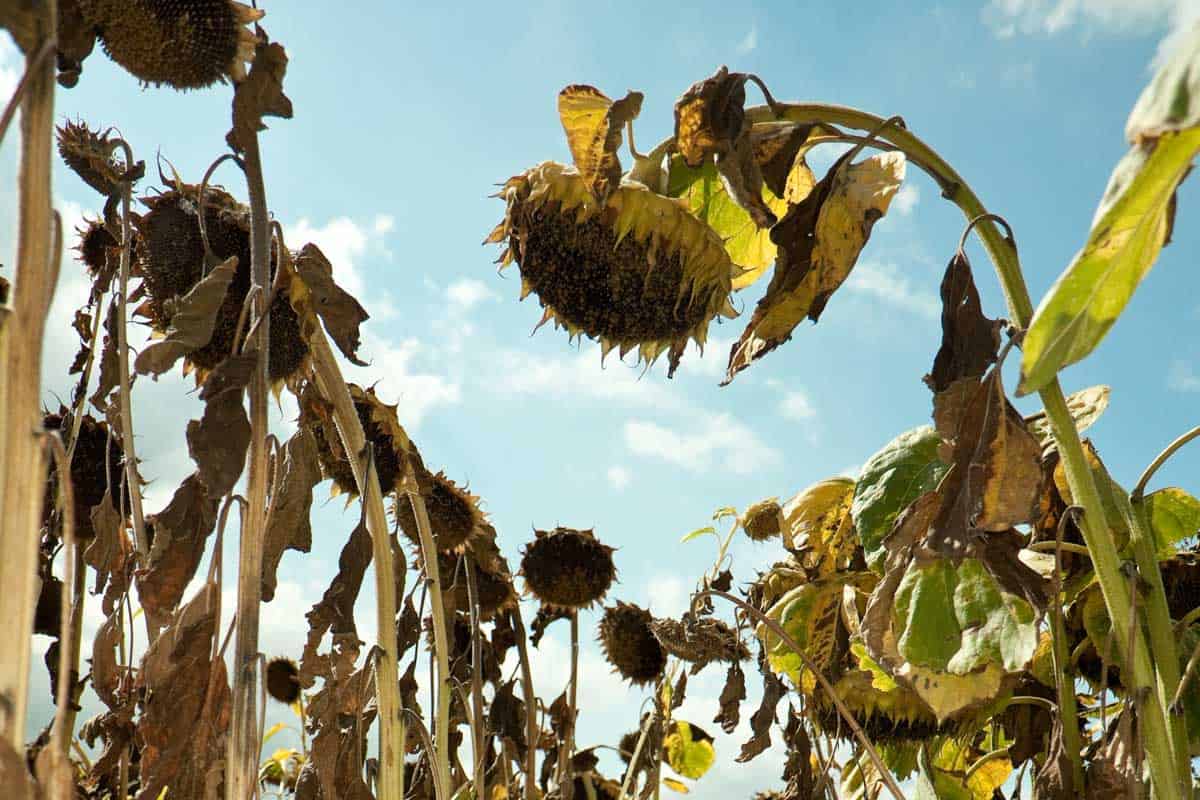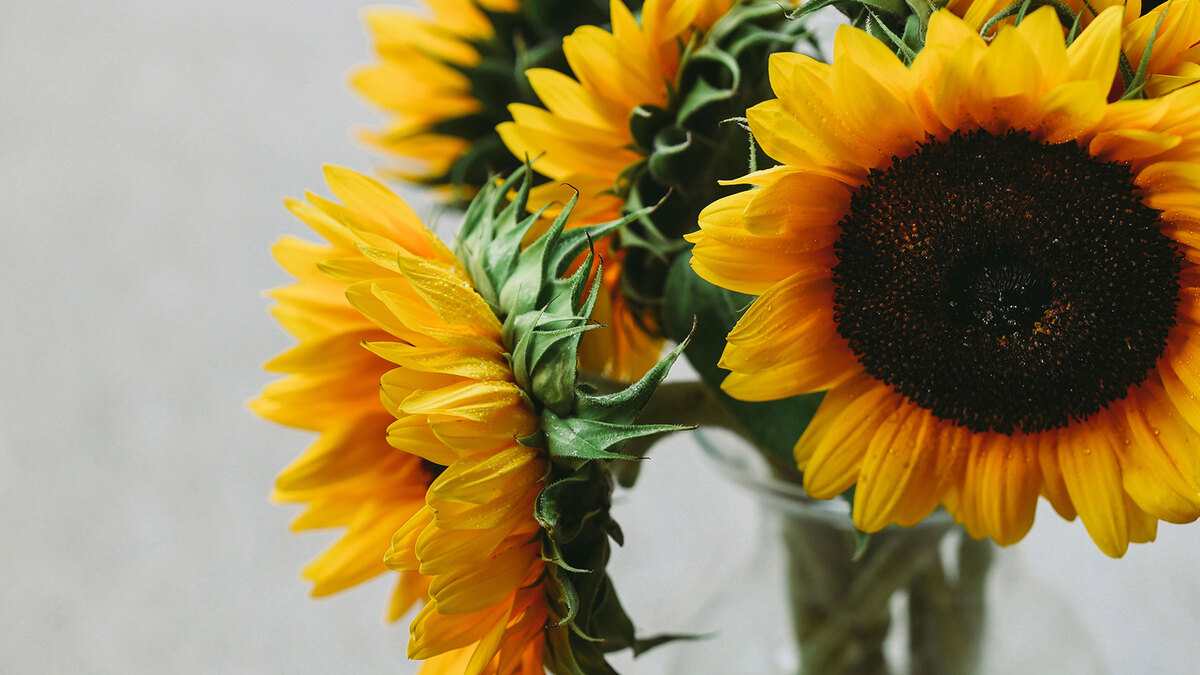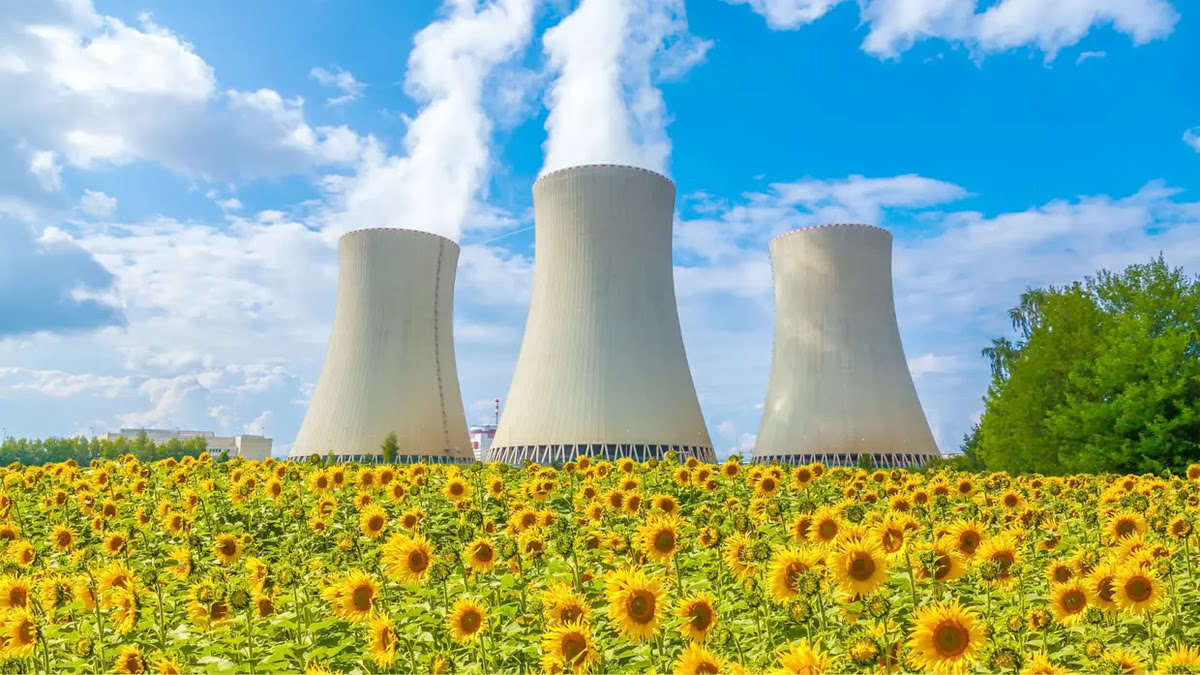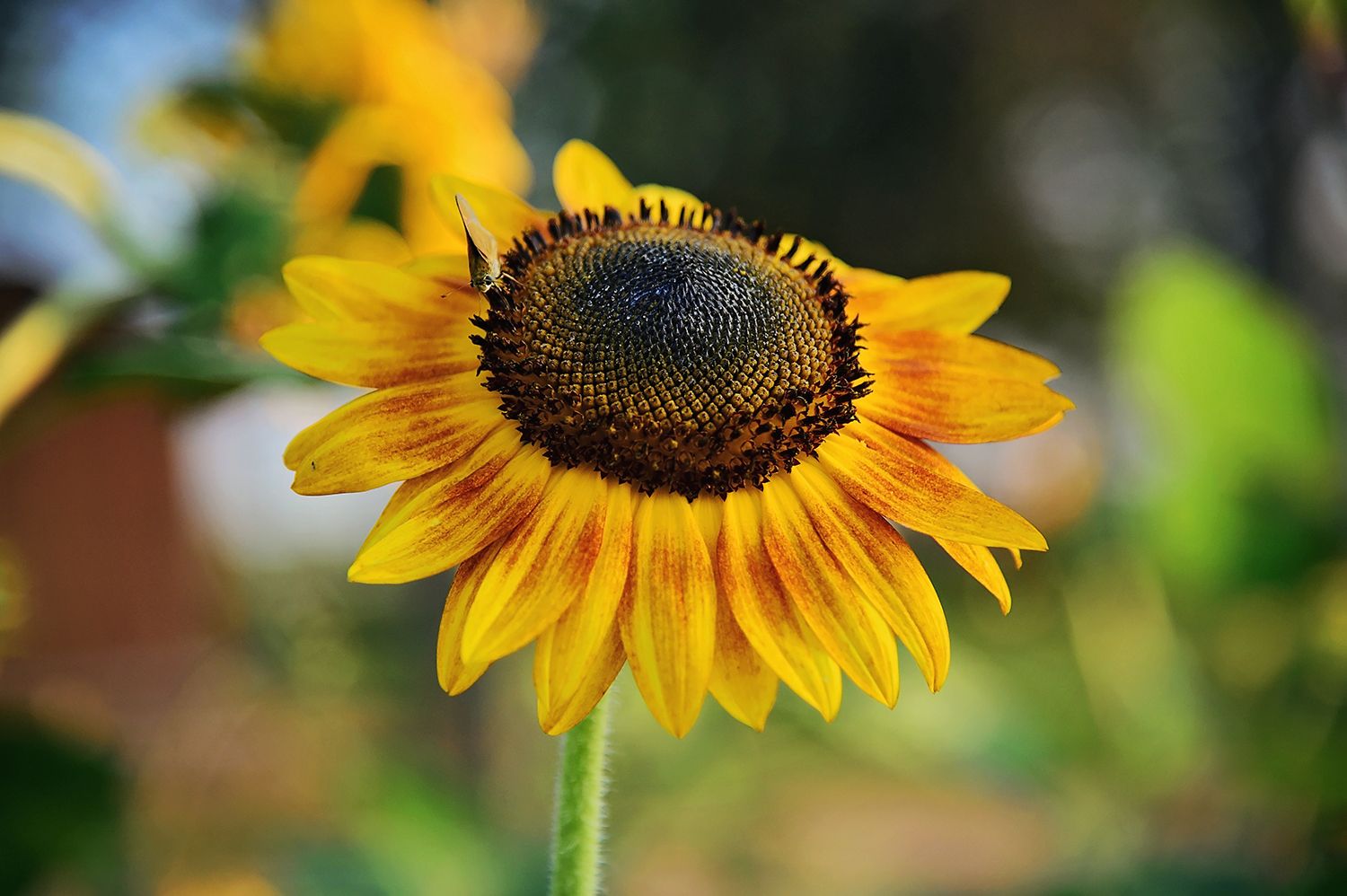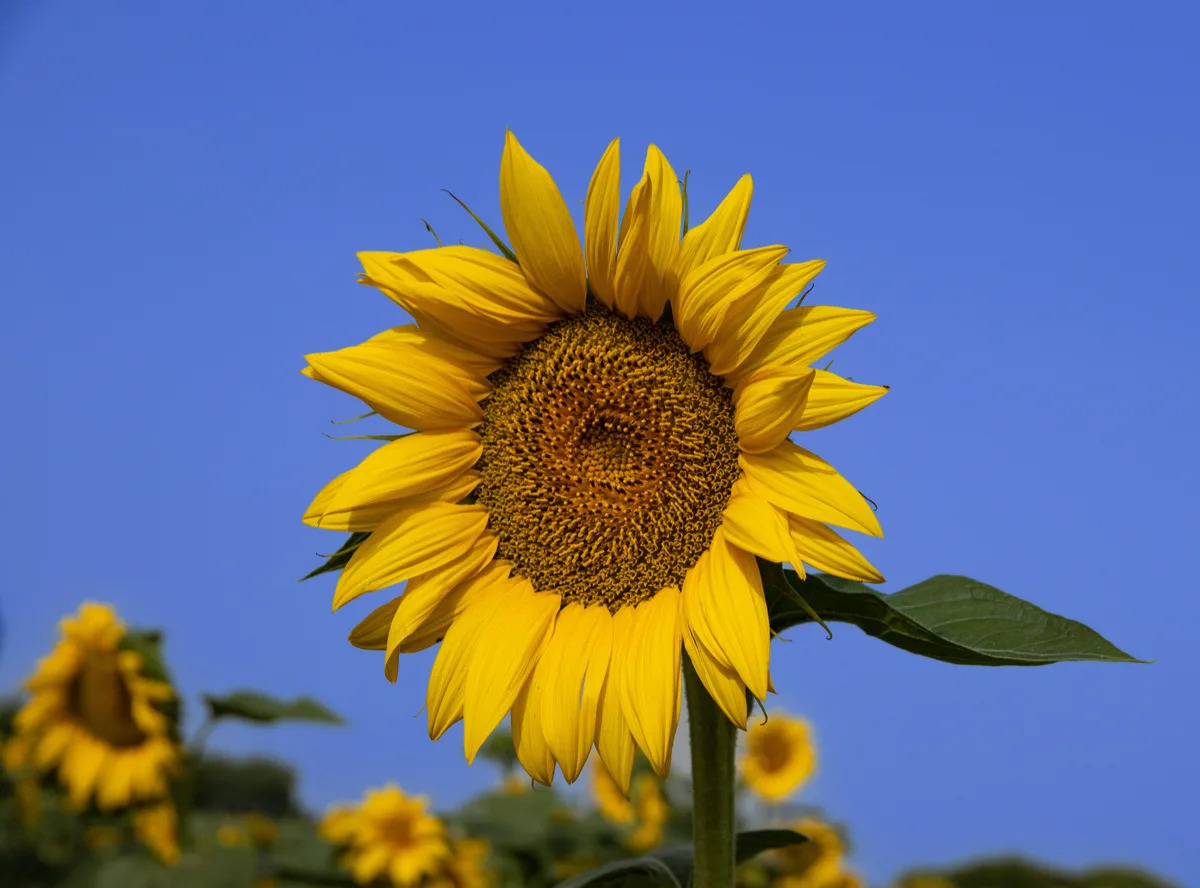Home>Types of Gardening>Ornamental Gardening>Why Do Sunflowers Lose Their Petals
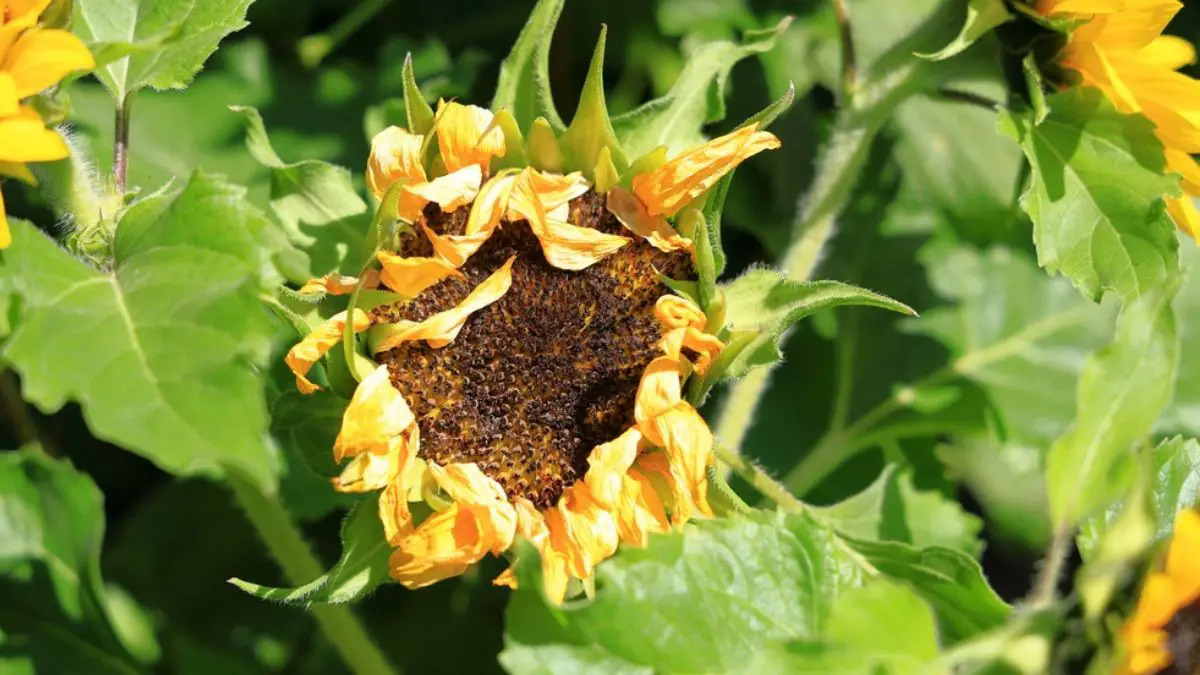

Ornamental Gardening
Why Do Sunflowers Lose Their Petals
Modified: January 22, 2024
Discover why sunflowers lose their petals in this informative article about ornamental gardening. Learn how to properly care for your sunflowers to keep them looking their best.
(Many of the links in this article redirect to a specific reviewed product. Your purchase of these products through affiliate links helps to generate commission for Chicagolandgardening.com, at no extra cost. Learn more)
Table of Contents
Introduction
Ornamental gardening is a beloved pastime for many, offering a beautiful and tranquil escape from the hustle and bustle of daily life. One plant that holds a special place in the hearts of gardeners is the sunflower. With its vibrant yellow petals and towering height, the sunflower is a symbol of joy and positivity. However, have you ever wondered why sunflowers eventually lose their petals? This fascinating process is not just a random occurrence, but rather a part of their natural life cycle.
To understand why sunflowers lose their petals, it is important to first explore the anatomy of these remarkable plants. Sunflowers belong to the family Asteraceae and are characterized by their large, daisy-like flower heads, consisting of numerous individual flowers called florets. The central portion of the sunflower head, known as the disc florets, is composed of tiny, tubular flowers that develop into seeds. The outer portion, called the ray florets, consists of long, petal-like structures that attract pollinators and provide aesthetic appeal.
Like all living organisms, sunflowers go through a life cycle that encompasses different stages of growth and development. From a tiny seed planted in the soil, a sunflower germinates and begins its journey towards maturity. As it grows, the sunflower develops sturdy stems and leaves, eventually producing a bud that holds the promise of a spectacular flower.
When the sunflower reaches its peak maturity, it proudly displays its vibrant petals, spreading cheer and attracting various pollinators, such as bees and butterflies. However, as the flower completes its reproductive process, the petals gradually start to wither and fall off. This process, known as petal loss, is a crucial step towards the sunflower’s ultimate goal of producing viable seeds.
Petal loss in sunflowers is influenced by various factors, including age, environmental conditions, and the plant’s overall health. Understanding these factors and the mechanisms behind petal loss can help gardeners and enthusiasts cultivate and care for sunflowers with greater success.
In this article, we will delve into the intricacies of petal loss in sunflowers, exploring the importance of this process, the mechanisms involved, and the environmental factors that influence it. Join us on this captivating journey through the world of sunflowers, and unlock the secrets behind their mesmerizing but temporary beauty.
Anatomy of a Sunflower
To truly appreciate the beauty and complexity of a sunflower, it is important to understand its anatomy. Sunflowers, scientifically known as Helianthus, are part of the Asteraceae family and are admired for their large, showy flower heads. These flower heads consist of two main parts: the disc florets and the ray florets.
The disc florets are located at the center of the flower head and are tightly packed together. Each disc floret is a tiny, tubular flower that contains both male and female reproductive organs. These florets play a vital role in seed production as they develop into the seeds we commonly associate with sunflowers.
Surrounding the disc florets are the ray florets, which are the petal-like structures that give sunflowers their iconic appearance. The ray florets are responsible for attracting pollinators like bees, butterflies, and birds. Each ray floret is actually an individual flower with a single petal that can be either yellow or a mixture of yellow and different shades of red or orange.
Beneath the flower head, there is a collection of green, leaf-like structures known as bracts. The bracts provide support to the flower head and protect the developing seeds. They also enhance the visual appeal of the sunflower, adding a touch of green to the vibrant burst of color from the petals.
At the base of the flower head, you will find a ring of tiny, elongated structures called phyllaries. These bract-like structures protect the developing flower head as it forms inside the bud. They are generally green in color and act as a protective barrier for the delicate flower structures during their early stages of growth.
Sunflower leaves are large, broad, and ovate-shaped, with a rough texture that is slightly hairy to the touch. The leaves are arranged in an alternate pattern along the stem and play a crucial role in photosynthesis, capturing sunlight and converting it into energy for the plant.
The stem of a sunflower is sturdy and can grow to impressive heights, with some varieties reaching up to 10 feet or more. The stem provides support to the flower head and allows it to stand tall, basking in the sun’s rays.
Understanding the anatomy of a sunflower not only enhances our appreciation for their beauty, but also provides insights into their reproductive processes and the mechanisms underlying petal loss. This knowledge can help gardeners and enthusiasts cultivate and care for sunflowers, ensuring optimal growth and health.
Life Cycle of a Sunflower
The life cycle of a sunflower is a remarkable journey that begins with a tiny seed and ends with the production of new seeds for future generations. Understanding this life cycle is essential for gardeners and enthusiasts who want to grow and appreciate these magnificent plants.
The life cycle of a sunflower can be broken down into several distinct stages. It all starts with a seed, which is typically planted in the soil during the spring or early summer. The seed contains all the genetic material necessary for the development of a mature sunflower.
Once the seed is planted and receives adequate sunlight, water, and nutrients, it undergoes a process called germination. During germination, the seed absorbs water, causing it to swell and eventually crack open. A tiny root, known as the radicle, emerges from the seed and begins to grow downward into the soil.
As the radicle continues to grow, it gives rise to the plant’s primary root system, which anchors the sunflower in the ground and absorbs water and nutrients from the soil. At the same time, a shoot emerges from the seed and starts to grow upward toward the surface.
As the shoot emerges, it develops two seed leaves, known as cotyledons, which provide nourishment to the growing plant until it can photosynthesize and produce its own food. Once the cotyledons have fulfilled their purpose, they wither and fall off.
With the establishment of the root system and the emergence of the shoot, the sunflower enters the vegetative growth stage. During this stage, the sunflower focuses on growing leaves and stems, expanding its surface area for optimal photosynthesis.
As the sunflower matures, it starts to produce flower buds. These buds gradually develop and transform into the iconic sunflower flower heads. The flower heads contain both the disc florets and the ray florets, with the disc florets located at the center and the ray florets surrounding them.
Once the sunflower blooms, it enters the reproductive stage of its life cycle. The disc florets, which contain both male and female reproductive organs, undergo fertilization. Pollinators, such as bees and butterflies, play a crucial role in transferring pollen from the male parts of one flower to the female receptive parts of another.
After successful fertilization, the disc florets develop into seeds. The petals of the sunflower begin to wither and fall off, revealing the developing seeds within the flower head. The sunflower’s energy and resources now shift from producing petals to nourishing the maturing seeds.
Once the seeds have reached maturity and the flower head has fully dried, it is time to harvest the sunflower. The seeds can be used for various purposes, including cooking, bird feed, or saved for planting in the following season.
The life cycle of a sunflower is both beautiful and awe-inspiring. From a tiny seed to a towering flower, sunflowers captivate us with their journey. Understanding each stage of the life cycle allows gardeners and enthusiasts to appreciate and care for sunflowers with a deep sense of admiration and respect.
Petal Loss in Sunflowers
As sunflowers reach the end of their flowering period, petal loss becomes an inevitable part of their life cycle. The loss of petals is a natural occurrence that serves a crucial purpose in the reproductive success of the sunflower.
When a sunflower is in full bloom, its bright and vibrant petals are not only a visual delight but also serve as beacons to attract pollinators. The colorful petals contain nectar and guide insects like bees and butterflies towards the center of the flower head, where the disc florets await pollination.
However, as the sunflower completes its reproductive process and nears the end of its life cycle, the petals gradually begin to wither and fall off. This petal loss is not a sign of the plant’s decline, but rather a strategic move to maximize the production of viable seeds.
Petals are essential for attracting pollinators, but they no longer serve a purpose once fertilization has occurred. By shedding the unnecessary petals, the sunflower conserves energy and resources that would otherwise be spent on maintaining non-functional structures.
Moreover, petal loss allows the sunflower to redirect its resources towards seed development. As the petals wither and fall, the plant can channel its nutrients towards nourishing the growing seeds, ensuring they reach optimal maturity.
During the process of petal loss, the sunflower undergoes a series of physiological changes. The petals gradually lose their vibrant color and become dry and brittle. At the base of each petal, a small abscission zone forms, which serves as a weak point that eventually leads to petal detachment.
External factors such as wind, rain, and physical disturbances can also hasten the process of petal loss in sunflowers. Strong gusts of wind or heavy rain can easily dislodge the delicate petals, while accidental brushing or touching of the flowers may also cause petals to detach.
It is important to note that petal loss is a gradual process and may not happen simultaneously for all flowers within a sunflower patch. Some flowers may retain their petals longer, while others may shed them earlier. This variation is a natural occurrence and part of the sunflower’s diversity.
Understanding the phenomenon of petal loss in sunflowers helps gardeners and enthusiasts appreciate the intricate mechanisms behind the plant’s reproductive strategy. It reminds us of the resilience and adaptability of nature, as well as the interconnectedness between plants and the organisms they rely on for pollination.
Factors Affecting Petal Loss
Several factors can influence the process of petal loss in sunflowers. Understanding these factors can help gardeners and enthusiasts better care for their sunflowers and ensure optimal petal retention and overall plant health.
1. Age: The age of a sunflower plays a significant role in petal loss. As the plant matures and completes its reproductive cycle, the petals naturally wither and fall off. Young sunflowers typically exhibit stronger petal attachment and may retain their petals for longer periods.
2. Environmental conditions: External factors such as temperature, humidity, and light intensity can affect petal loss. Prolonged exposure to high temperatures or extreme fluctuations can accelerate petal withering. Similarly, overly humid conditions can promote fungal growth, leading to petal decay. Adequate sunlight is essential for plant health, but excessive exposure can hasten petal loss.
3. Watering: Proper watering techniques can influence petal retention. Overwatering can lead to root rot and other water-related fungal diseases, which can negatively impact the overall health of the sunflower and contribute to petal loss. On the other hand, inadequate watering can result in drought stress, causing the petals to dry out more quickly.
4. Nutrient balance: Sunflowers require a balanced supply of nutrients, including nitrogen, phosphorus, and potassium, among others. Proper nutrition promotes healthy plant growth and can contribute to petal retention. Imbalances or deficiencies in essential nutrients can weaken the plant’s overall health and increase petal loss.
5. Pest and disease pressure: Pests such as aphids, caterpillars, or fungal diseases can directly damage the petals, causing them to wither and fall off prematurely. Regular inspection and appropriate pest management practices can help minimize petal loss caused by these factors.
6. Pollination success: Successful pollination is essential for sunflower reproductive success. If pollination does not occur or is incomplete, the petals may remain attached for longer periods as the plant continues to attract pollinators. Conversely, when pollination is successful, petal loss is more likely to occur as the flower transitions from attracting pollinators to focusing its energy on seed development.
It is important to note that while these factors contribute to petal loss in sunflowers, they are all part of the plant’s natural life cycle. Some petal loss is to be expected, and it should not be a cause for concern unless accompanied by other signs of plant stress or disease.
By providing the ideal growing conditions, regular monitoring, and appropriate care, gardeners and enthusiasts can minimize excessive petal loss and ensure a healthy and vibrant display of sunflowers in their garden.
Importance of Petal Loss in Sunflowers
Petal loss in sunflowers may seem like a simple and insignificant process, but it serves a crucial role in the overall reproductive success and ecological importance of these remarkable plants.
1. Resource allocation: Petal loss allows the sunflower to redirect its resources, such as water and nutrients, towards the development and maturation of the seeds. By shedding the petals, the plant conserves energy and focuses its efforts on the production of viable, nutrient-rich seeds.
2. Seed dispersal: Sunflower seeds are the result of successful pollination and play a significant role in the dispersal of the plant’s genetic material. The loss of petals exposes the developing seeds, making them more accessible to seed-dispersing organisms such as birds, squirrels, and other wildlife. These animals feed on the seeds and transport them to new locations, aiding in the distribution of sunflower offspring.
3. Ecological interactions: Petal loss facilitates interactions between sunflowers and their pollinators. As the petals wither and fall off, the sunflower transitions from attracting pollinators to focusing on seed production. This shift signals to the pollinators that their work is complete and encourages them to move on to other flowers, ensuring efficient pollination within the population.
4. Biological diversity: Petal loss is a part of the natural life cycle of sunflowers and contributes to the overall biodiversity of ecosystems. As sunflowers lose their petals at different rates, it creates a varied landscape of flowers at different stages of their reproductive cycle. This diversity attracts a wide range of pollinators, enhancing the ecological balance and promoting the health of the surrounding environment.
5. Plant adaptation: Petal loss is also linked to the adaptation and survival of sunflowers in their environment. By shedding their petals, sunflowers reduce the risk of attracting herbivorous insects that may feed on the petals. This adaptive mechanism helps protect the flower’s reproductive structures and increases the chances of successful seed production.
Understanding the importance of petal loss in sunflowers allows us to appreciate the intricate strategies and adaptations that plants employ to ensure their survival and successful reproduction. It highlights the interconnectedness of organisms and the role they play in maintaining the delicate balance of ecosystems.
Whether we grow sunflowers in our gardens or simply enjoy their beauty in the wild, recognizing the significance of petal loss deepens our connection with these magnificent plants and encourages us to be mindful of their unique life cycles and ecological contributions.
Mechanisms Behind Petal Loss
Petal loss in sunflowers is not a random occurrence but is instead driven by specific mechanisms that regulate the detachment of the petals from the flower head. Understanding these mechanisms provides insight into the intricate processes that govern the life cycle of sunflowers.
1. Abscission Zone Formation: The initiation of petal loss in sunflowers begins with the formation of an abscission zone at the base of each petal. This zone is characterized by the development of a thin layer of cells with weak cell walls. These weakened cells act as a natural breaking point, facilitating the detachment of the petals.
2. Hormonal Signaling: The process of petal loss is regulated by hormonal signaling within the sunflower plant. As the flower matures and completes its reproductive function, hormonal signals trigger the production of specific enzymes, such as cellulases and pectinases. These enzymes break down the cell walls in the abscission zone, effectively loosening the attachment between the petals and the flower head.
3. Water Retention: Proper hydration plays a critical role in petal loss. As the sunflower ages, water retention in the petals decreases, causing them to dehydrate and become dry and brittle. The loss of moisture weakens the structural integrity of the petals and increases their susceptibility to detachment.
4. Mechanical Stress: Environmental factors such as wind, rain, or physical disturbances can impart mechanical stress on the sunflower petals, further promoting their detachment. Strong gusts of wind can sway the flower heads, causing the petals to rub against each other or other floral structures. Continuous friction can lead to abrasion and eventually contribute to petal loss.
5. Ethylene Production: Ethylene is a plant hormone that is involved in various physiological processes, including the senescence and abscission of plant organs. As sunflowers approach the end of their flowering period, the production of ethylene increases. Ethylene signals cellular changes that expedite the breakdown of cell walls in the abscission zone, ultimately leading to petal detachment.
These mechanisms work together to trigger and facilitate the process of petal loss in sunflowers. As the plant matures and completes its reproductive function, hormonal signaling, water retention, mechanical stress, and ethylene production all play crucial roles in initiating and facilitating the detachment of the petals.
Understanding the mechanisms behind petal loss allows gardeners and enthusiasts to recognize the natural processes occurring in their sunflower plants. By providing the appropriate environmental conditions and care, it is possible to promote healthy petal retention while respecting the inherent life cycle of these magnificent flowers.
Environmental Factors Influencing Petal Loss
The process of petal loss in sunflowers can be influenced by various environmental factors that impact the overall health and vitality of the plants. Understanding these factors can help gardeners and enthusiasts create optimal conditions to minimize petal loss and promote the longevity of vibrant petals.
1. Temperature: Extreme temperatures can accelerate petal loss in sunflowers. High temperatures can cause the petals to dehydrate more rapidly, leading to dryness and brittleness. Conversely, extremely low temperatures can damage the cells within the petals, making them more susceptible to detachment.
2. Humidity: Humidity levels also play a role in petal loss. Excessive humidity can create a favorable environment for fungal growth, which can lead to petal decay and subsequent detachment. It is important to provide adequate air circulation and avoid excess moisture around the flowers to minimize the risk of fungal infections.
3. Light Intensity: Sunflowers require an appropriate balance of light for healthy growth and development. Insufficient light can lead to weak stems and reduced petal attachment, making the petals more prone to falling off. On the other hand, excessive exposure to strong sunlight can accelerate petal withering and premature petal loss.
4. Wind: Strong winds can exert mechanical stress on sunflower petals, causing them to rub against each other or other floral structures. This friction can lead to petal abrasion and detachment. Therefore, it is advisable to provide support to sunflower stems in windy areas to minimize the impact of gusts.
5. Rain: While rain is essential for the health of sunflowers, heavy rainfall can also contribute to petal loss. The force of raindrops hitting the petals can impact their structural integrity, causing them to detach prematurely. Providing some protection, such as a shelter or planting in an area with ample natural cover, can help mitigate the impact of heavy rainfall.
6. Soil Moisture: Proper watering techniques are crucial to maintaining the health of sunflowers and minimizing petal loss. Overwatering can lead to root rot and other water-related fungal diseases, which can compromise the overall plant health and accelerate petal decay. In contrast, inadequate watering can result in drought stress, causing the petals to dry out more quickly.
It is important to note that while these environmental factors can influence petal loss, sunflowers have a degree of natural resilience and adaptability. Each environmental factor should be considered within the context of the specific sunflower species or variety being grown, allowing for adjustments and adaptations to create an optimal growing environment.
By understanding and managing these environmental factors, gardeners and enthusiasts can create conditions that promote healthy petal retention, prolonging the vibrant display of sunflowers and enhancing the overall aesthetic beauty of the garden.
Significance of Petal Loss in Seed Dispersal
Petal loss in sunflowers serves a significant purpose in the process of seed dispersal. As the petals wither and fall off, the sunflower reveals its developing seeds, setting the stage for the dispersal of its genetic material to new locations.
1. Accessibility to Seed-Dispersing Organisms: The loss of petals exposes the developing seeds within the flower head, making them more accessible to organisms that aid in seed dispersal. Birds, squirrels, and other wildlife are attracted to the sunflower seeds as a food source. As these animals consume the seeds, they inadvertently disperse them to new areas through their natural movements, helping to distribute the sunflower offspring.
2. Efficient and Widespread Dispersal: Petal loss ensures that the seeds of sunflowers have a higher chance of being dispersed over a wider range. By shedding their petals, sunflowers increase the visibility and accessibility of the seeds, making them more likely to be noticed and consumed by seed-dispersing organisms. This mechanism enhances the potential for seeds to be transported and deposited in diverse habitats, contributing to the colonization and survival of sunflowers in different areas.
3. Reduction of Seed Predation: As the petals are shed, the remaining flower head becomes less conspicuous, reducing the risk of attracting seed predators. By losing the visually enticing petals, sunflowers minimize the attention they draw to their developing seeds, allowing them to escape the notice of potential seed consumers or competitors. This adaptation helps safeguard the reproductive success of sunflowers by reducing the chances of seed predation.
4. Genetic Diversity and Adaptation: Seed dispersal facilitated through petal loss promotes genetic diversity within sunflower populations. As seeds are carried to various locations, they encounter new environments and different ecological conditions. This exposure to diverse habitats increases the chances of genetic adaptation and the creation of new genetic lineages better suited to local conditions. This genetic diversity enhances the resilience and long-term survival of sunflower populations.
5. Restoration of Habitats: Sunflowers are often used in ecological restoration efforts due to their ability to provide habitat and food sources for a variety of organisms. The dispersal of sunflower seeds through petal loss aids in the restoration of natural habitats by establishing new populations and promoting ecological connectivity between fragmented areas. This restoration contributes to the overall health and biodiversity of ecosystems.
The significance of petal loss in seed dispersal highlights the intricate relationship between sunflowers and seed-dispersing organisms. Through shedding their petals and exposing their developing seeds, sunflowers ensure the widespread distribution of their genetic material, increase genetic diversity, and contribute to the ecological balance of their surrounding environment.
Conclusion
Sunflowers, with their vibrant petals and towering height, captivate us with their beauty. Understanding the phenomenon of petal loss in sunflowers reveals the intricate processes and natural adaptations that govern their life cycle.
From the anatomy of a sunflower to its life cycle stages, we explored the journey of this remarkable plant. Petal loss emerged as a natural and essential part of the sunflower’s reproductive success.
We discovered that petal loss in sunflowers is influenced by various factors, including age, environmental conditions, and the overall health of the plant. Understanding these factors enables us to provide the optimal conditions for sunflowers, promoting healthy petal retention and overall plant vitality.
The mechanisms behind petal loss, such as abscission zone formation, hormonal signaling, water retention, mechanical stress, and ethylene production, shed light on the intricate processes that govern the detachment of petals from the flower head.
Furthermore, we explored how environmental factors, such as temperature, humidity, light intensity, wind, rain, and soil moisture, can impact petal loss. By managing these factors, we can create an environment that minimizes petal loss and ensures the longevity of vibrant petals.
Petal loss in sunflowers also plays a significant role in seed dispersal, allowing the plant to spread its genetic material to new locations. It promotes genetic diversity, ecological interactions, and the restoration of habitats, contributing to the overall health and biodiversity of ecosystems.
In conclusion, the captivating journey of sunflowers, from the height of their vibrant blooms to the shedding of their petals, reveals the intricate mechanisms and natural processes that underlie their beauty and reproductive success. By understanding and appreciating these processes, we can cultivate and care for sunflowers with a deeper sense of admiration and respect, while providing a haven for these remarkable plants to thrive.
